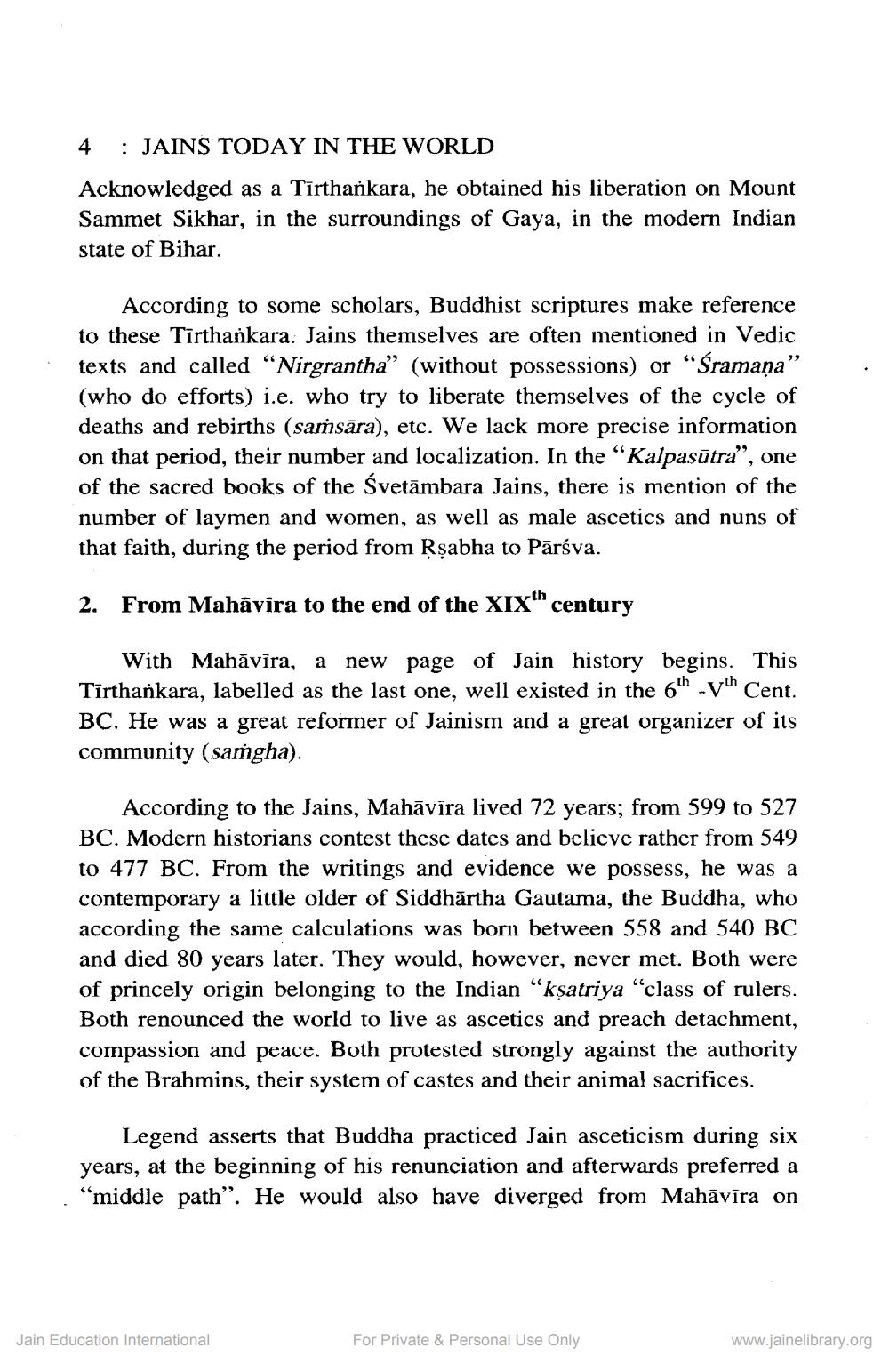________________
4 : JAINS TODAY IN THE WORLD
Acknowledged as a Tirthankara, he obtained his liberation on Mount Sammet Sikhar, in the surroundings of Gaya, in the modern Indian state of Bihar.
According to some scholars, Buddhist scriptures make reference to these Tīrthankara. Jains themselves are often mentioned in Vedic texts and called “Nirgrantha” (without possessions) or “Sramana" (who do efforts) i.e. who try to liberate themselves of the cycle of deaths and rebirths (saṁsāra), etc. We lack more precise information on that period, their number and localization. In the “Kalpasūtra”, one of the sacred books of the Svetāmbara Jains, there is mention of the number of laymen and women, as well as male ascetics and nuns of that faith, during the period from Rşabha to Pārsva.
2. From Mahāvira to the end of the Xixth century
With Mahāvīra, a new page of Jain history begins. This Tīrthankara, labelled as the last one, well existed in the 6h -vh Cent. BC. He was a great reformer of Jainism and a great organizer of its community (samgha).
According to the Jains, Mahāvīra lived 72 years; from 599 to 527 BC. Modern historians contest these dates and believe rather from 549 to 477 BC. From the writings and evidence we possess, he was a contemporary a little older of Siddhārtha Gautama, the Buddha, who according the same calculations was born between 558 and 540 BC and died 80 years later. They would, however, never met. Both were of princely origin belonging to the Indian “ksatriya "class of rulers. Both renounced the world to live as ascetics and preach detachment, compassion and peace. Both protested strongly against the authority of the Brahmins, their system of castes and their animal sacrifices.
Legend asserts that Buddha practiced Jain asceticism during six years, at the beginning of his renunciation and afterwards preferred a “middle path”. He would also have diverged from Mahāvīra on
Jain Education International
For Private & Personal Use Only
www.jainelibrary.org




